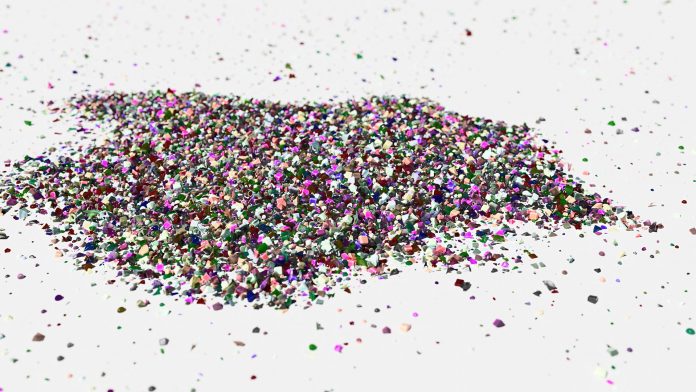A Princeton University study has revealed how microplastic particles travel long distances through porous materials with implications for preventing the spread and accumulation of contaminants in food and water sources.
Plastic pollution is everywhere, with microplastic particles found in natural environments throughout the globe, even in Antarctica. However, until now, there has been little understanding of how microplastic particles move through and accumulate in the environment.
A Princeton University study has revealed the mechanism through which microplastics and particulate pollutants are carried long distances. It has shown that microplastic particles get stuck when travelling through porous materials (such as soil and sediment) but later break free and often continue to move further. It has previously been believed that when microparticles get stuck, they stay there but the research indicates that microparticles are pushed free when the rate of fluid flowing through the material remains high enough. They found that in the process of deposition or formation of clogs, and erosion, the breakup, is cyclical; clogs form and then are broken up by fluid pressure over time and distance, moving particles further through the pore space until clogs reform.
Sujit Datta, assistant professor of chemical and biological engineering and associated faculty of the Andlinger Center for Energy and the Environment, the High Meadows Environmental Institute and the Princeton Institute for the Science and Technology of Materials led the research team, which included Navid Bizmark, a postdoctoral research associate in the Princeton Institute for the Science and Technology of Materials, graduate student Joanna Schneider, and Rodney Priestley, professor of chemical and biological engineering and vice dean for innovation.
He said: “Not only did we find these cool dynamics of particles getting stuck, clogged, building up deposits and then getting pushed through, but that process enables particles to get spread out over much larger distances than we would have thought otherwise”.
In the paper, the researchers describe pumping fluorescent polystyrene microparticles and fluid through a transparent porous media developed in Datta’s lab, and then watching the microparticles move under a microscope. Polystyrene is the plastic microparticle that makes up Styrofoam, which is often littered into soils and waterways through shipping materials and fast-food containers. The porous media they created closely mimics the structure of naturally occurring media, including soils, sediments, and groundwater aquifers.
“We figured out tricks to make the media transparent. Then, by using fluorescent microparticles, we can watch their dynamics in real time using a microscope,” said Datta. “The nice thing is that we can actually see what individual particles are doing under different experimental conditions.”
In the study, two types of particles – “sticky” and “nonsticky” were tested. These correspond with microplastic variants found in the environment. The researchers found these types did not differ in the process; they both clogged and unclogged themselves at high enough fluid pressures. The difference found was in the formation of clusters. The “nonsticky” particles generally got stuck at narrow passageways only, while the “sticky” particles were more likely to get trapped at any surface of the solid medium they encountered. This indicates that both types of particles can spread out over large areas and throughout hundreds of pores.
The ultimate goal of this research is to use the particle observations to improve parameters for larger scale models to predict the amount and location of contamination.
The models would help to predict contamination more accurately under various irrigation, rainfall, or ambient flow conditions. As well as this, the research can help inform mathematical models to better understand the likelihood of a particle moving over a certain distance and reaching a vulnerable destination, such as a nearby farmland, river, or aquifer. The researchers also studied how the deposition of microplastic particles impacts the permeability of the medium, including how easily water for irrigation can flow through soil when microparticles are present.
“Now that we found something so surprising in a system so simple, we’re excited to see what the implications are for more complex systems,” said Datta.
He explained that the principle could provide an insight into how clays, minerals, grains, quartz, viruses, microbes and other particles move within media with complex surface chemistries, as well as helping researchers to understand how to deploy engineered nanoparticles which can be used to remediate contaminated groundwater aquifers.
Beyond environmental remediation, the findings could be applicable for processes in a range of industries, from drug delivery to filtration mechanisms, said Datta.







